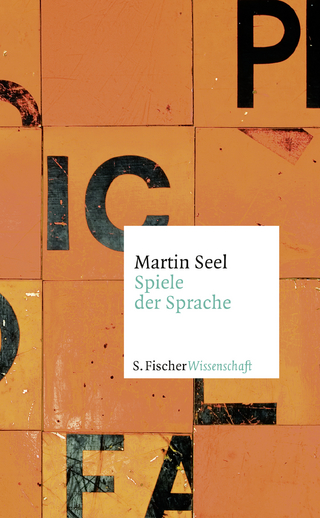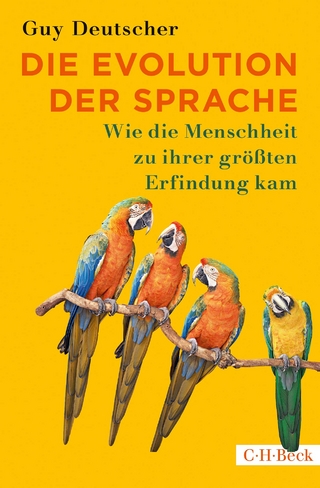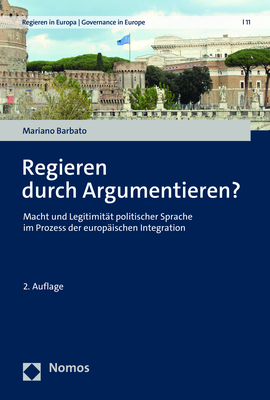
Demonstratives in Cross-Linguistic Perspective
Cambridge University Press (Verlag)
978-1-108-42428-8 (ISBN)
Demonstratives play a crucial role in the acquisition and use of language. Bringing together a team of leading scholars this detailed study, a first of its kind, explores meaning and use across fifteen typologically and geographically unrelated languages to find out what cross-linguistic comparisons and generalizations can be made, and how this might challenge current theory in linguistics, psychology, anthropology and philosophy. Using a shared experimental task, rounded out with studies of natural language use, specialists in each of the languages undertook extensive fieldwork for this comparative study of semantics and usage. An introduction summarizes the shared patterns and divergences in meaning and use that emerge.
Stephen C. Levinson is co-director of the Max Planck Institute for Psycholinguistics, and Professor of Comparative Linguistics at Radboud University Nijmegen. His research focusses on language diversity and its implications for theories of human cognition. He is the author of over 300 publications. Sarah Cutfield is Visiting Fellow, Linguistics at the Australian National University. Her specialties are descriptive and typological linguistics, sociolinguistics, linguistic anthropology, language documentation, Australian Aboriginal languages, creole languages, language ideology and identity. Michael J. Dunn is Professor of General Linguistics at Uppsala Universitet, Sweden since 2014. His academic background is in language description, linguistic typology, and phylogenetics, and his current research focus is on the evolutionary dynamics of language change. N. J. Enfield is Professor of Linguistics at The University of Sydney. He is head of a Research Excellence Initiative on The Crisis of Post-Truth Discourse. His research on language, culture, cognition and social life is based on long term field work in mainland Southeast Asia, especially Laos. Sérgio Meira is a researcher at Museu Paraense Emilio Goeldi, Bélem. He specializes in the Cariban and Tupian language families of lowland South America and in the Tiriyó language in particular.
Introduction: demonstratives – patterns in diversity Stephen C. Levinson; 1. The demonstrative questionnaire: 'this' and 'that' in comparative perspective David P. Wilkins; 2. Lao demonstrative determiners nii4 and nan4 – An intentionally discrete distinction for extensionally analogue space Nick Enfield; 3. Dalabon exophoric uses of demonstratives Sarah Cutfield; 4. Brazilian Portuguese – non-contrastive exophoric use of demonstratives in the spoken language Sergio Meira and Raquel Guirardello-Damian; 5. 'See this sitting one' – demonstratives and deictic classifiers in Goemai Birgit Hellwig; 6. Tzeltal – the demonstrative system Penelope Brown and Stephen C. Levinson; 7. Yucatec demonstratives in interaction: spontaneous vs. elicited data Jürgen Bohnemeyer; 8. Lavukaleve – exophoric usage of demonstratives Angela Terrill; 9. Tiriyó – non-contrastive exophoric uses of demonstratives Sergio Meira; 10. Trumai – non-contrastive exophoric uses of demonstratives Raquel Guirardello-Damian; 11. Saliba – Exophoric demonstratives Anna Margetts; 12. Warao demonstratives Stefanie Herrmann; 13. Chukchi – non-contrastive spatial demonstrative usage Michael Dunn; 14. Yélî Dnye – demonstratives in the language of Rossel Island, Papua New Guinea Stephen C. Levinson; 15. Tidore – non-contrastive demonstratives Miriam van Staden; 16. The Jahai multi-term demonstrative system – what's spatial about it? Niclas Burenhult.
| Erscheinungsdatum | 11.09.2018 |
|---|---|
| Reihe/Serie | Language Culture and Cognition |
| Zusatzinfo | Worked examples or Exercises; 69 Tables, black and white; 2 Halftones, black and white; 45 Line drawings, black and white |
| Verlagsort | Cambridge |
| Sprache | englisch |
| Maße | 158 x 235 mm |
| Gewicht | 780 g |
| Themenwelt | Geisteswissenschaften ► Philosophie ► Sprachphilosophie |
| Geisteswissenschaften ► Sprach- / Literaturwissenschaft ► Sprachwissenschaft | |
| ISBN-10 | 1-108-42428-7 / 1108424287 |
| ISBN-13 | 978-1-108-42428-8 / 9781108424288 |
| Zustand | Neuware |
| Haben Sie eine Frage zum Produkt? |
aus dem Bereich


